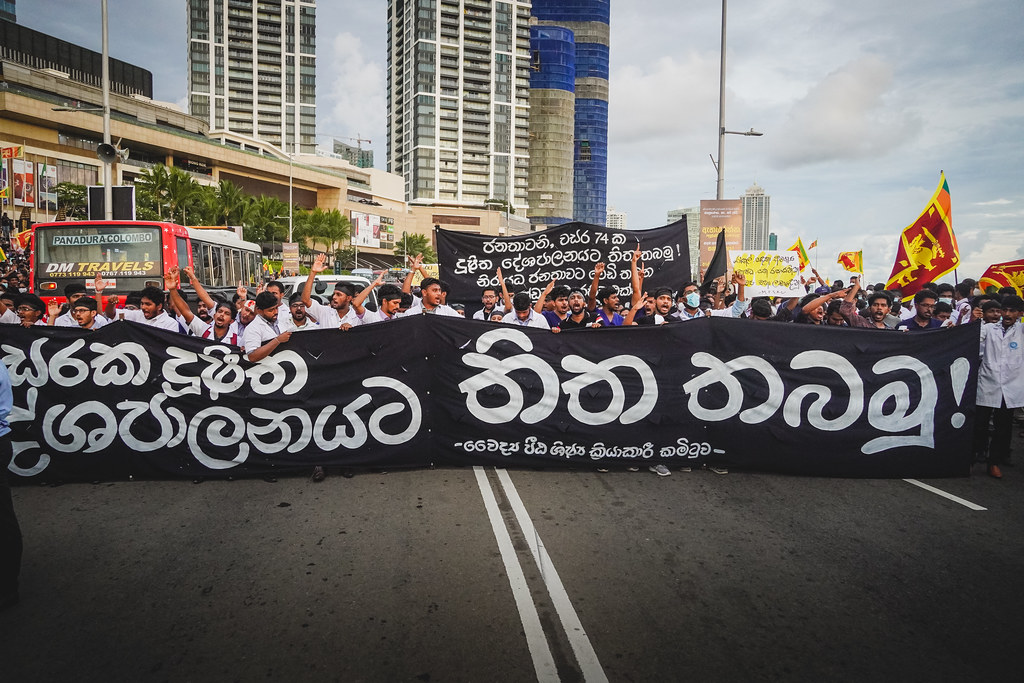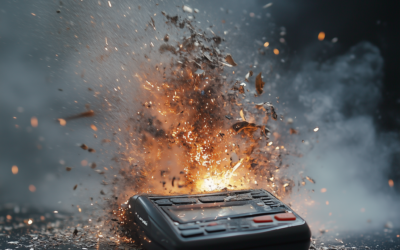Travel Risk Level: HIGH
Image source: Flickr
Brief Introduction:
The crisis in Sri Lanka has exacerbated over the past few weeks. The country is facing an unprecedented shortage of fuel, further dwindling the political instability. Residents are experiencing frequent power outages amid the energy crisis, water supply shortages, disruption in public and private transportation, and the high risk of deteriorating healthcare facilities. According to a recent report by the United Nations, an estimated six million Sri Lankans face the risk of food insecurity, due to record food price inflation, rising fuel prices, and widespread commodity shortages. Multiple organizations, including the Inter-University Students’ Federation, GotaGoGama, and the ‘Aragalaya’ (the struggle) as the citizens call it, have participated and continue to engage in protests, mainly in the capital city, Colombo.
What to Expect?
- Initially, it was the younger demographic actively engaged in the protests and demonstrations. However, in the last few weeks, rallies and strikes have increased among the railways’ employees, teachers, health workers, and a myriad of trade unions in the country, as the fuel supply has further declined. Long queues are seen at filling stations and at least fifteen citizens have died while waiting for fuel. One person was killed in a violent clash that erupted in a waiting line.
- For 9 July 2022, activists have called for a massive protest towards the Galle Face Green in Colombo, against the ongoing economic and political crisis. Opposition parties, students, and trade unions have expressed support for the event. Activists are likely to gather around public and government buildings, residences of the country’s Prime Minister and President, and strategic points such as the Lotus Road. The scale of this protest is anticipated to be unprecedented in nature.
- The demonstration may also affect healthcare services. However, emergency and essential services are likely to remain functional. Additional security presence is expected across the city as the protests may turn violent and police forces may use tear gas, baton-charge, and water cannons to disperse the crowd.
- The Magistrate’s Court in Colombo rejected the police’s request to issue an order restraining the protestors from penetrating the vicinity of the President’s House in Colombo Fort for the protests planned on 8 and 9 July. However, the police are authorized to take necessary action in the event of any unlawful activity.
Assessment:
- The shortage of essential imports such as medicines, fuel, and food items is expected to worsen. Due to demonstrations planned throughout the country, authorities may impose curfews to contain civil unrest.
- Businesses are advised to remain vigilant as borrowing opportunities may be limited.
- Travellers in Sri Lanka are advised to minimize safety and security risks by avoiding public places, especially government buildings as they may be grounds for protests by the public. Travellers are also encouraged to be vigilant of scheduled power cuts and should manage their activities accordingly to avoid disruptions. Foreigners participating in another country’s protests risk arrest, detention, and deportation.
- Consider a Sitata membership which will give you disruption and threat warnings while you’re on the ground along with emergency travel assistance should you find yourself in a troubling situation.
Conclusion:
The travel risk to Sri Lanka is currently HIGH. Many countries advise their citizens to avoid all non-essential travel to Sri Lanka due to the ongoing economic and political crisis.
SITATA’s previous situation report on Sri Lanka’s economic crisis, published 29 June 2022, can be accessed here.
Read Sitata’s previous Situational Report on the Sri Lankan crisis for additional information. For businesses that require a more detailed report on the situation, please refer to our in-depth country analysis report which is available from our support representatives.




